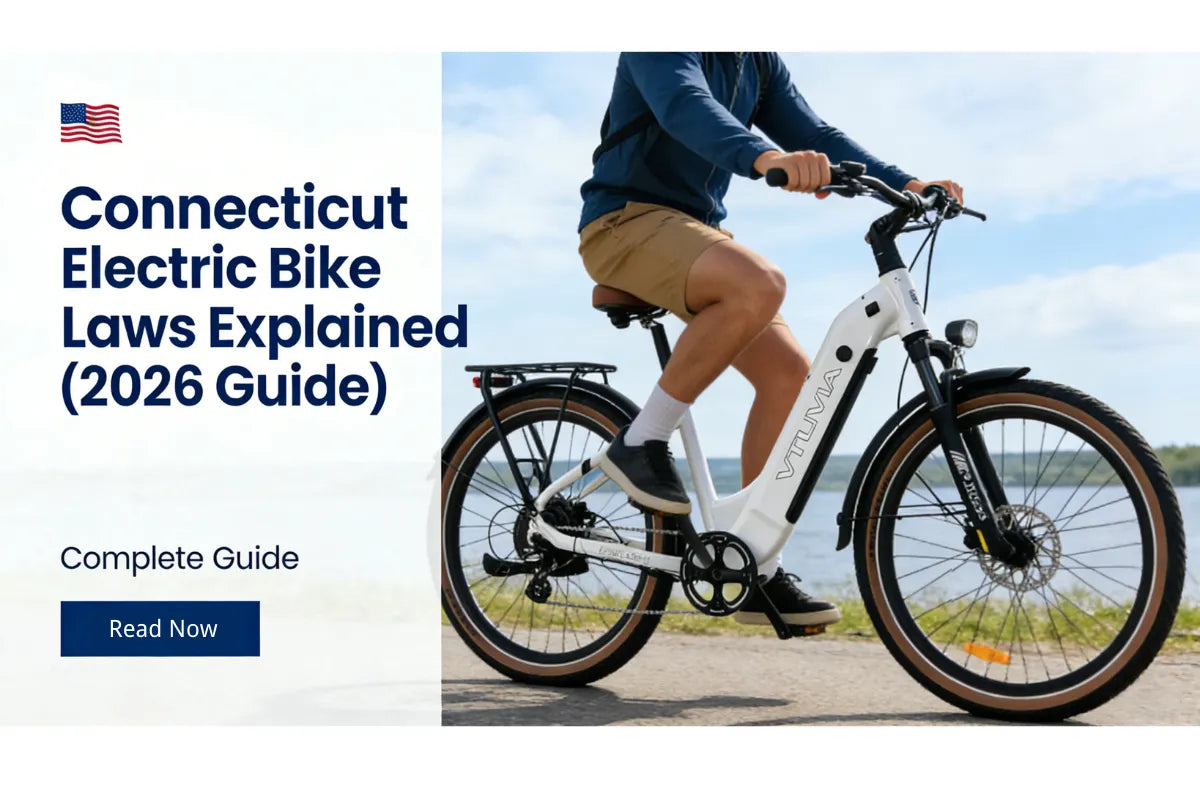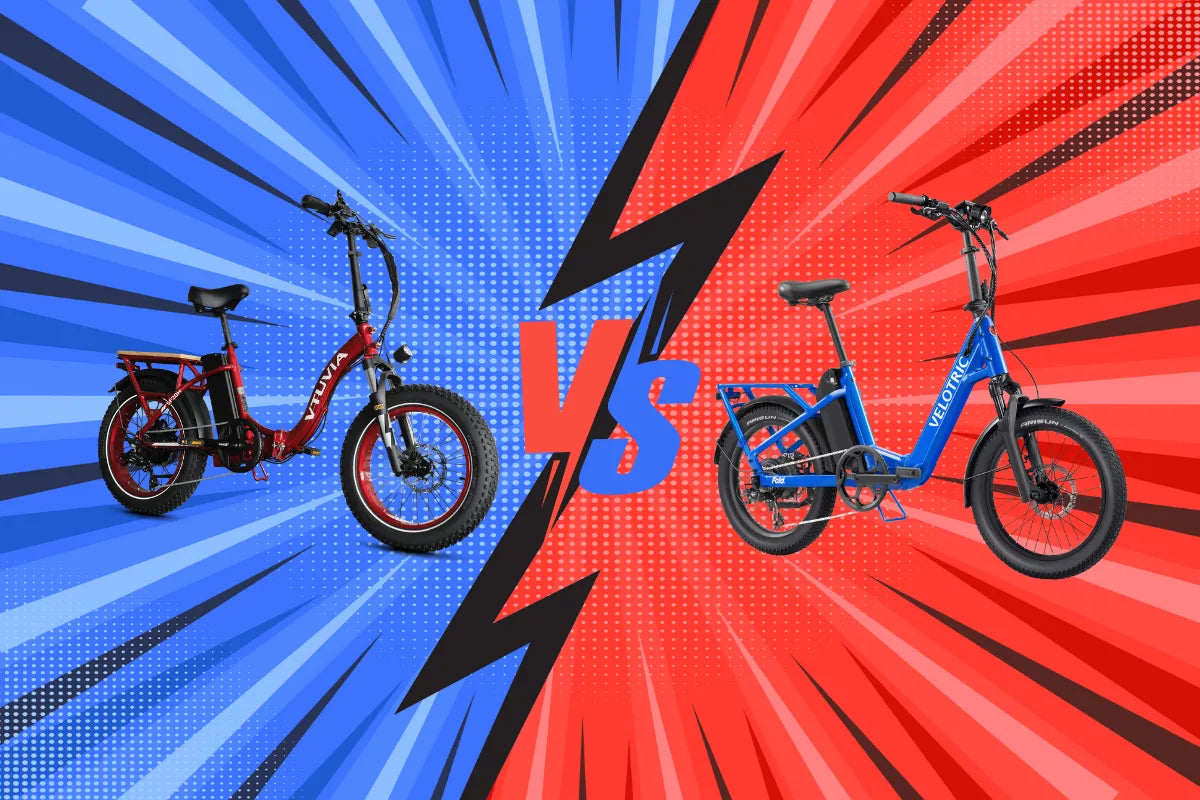How Long Do E-Bike Batteries Last? A Definitive Professional Guide
Table of contents
- What is an e-bike battery? (chemistry & units)
- How far does a battery take you on one charge? (practical ranges)
- What affects range — the full technical checklist
- Battery lifespan: cycles, calendar aging, and expected years
- How to measure and test your real range
- Practical charging & storage best practices (step-by-step)
- Maintenance, troubleshooting, and replacement signals
- Advanced techniques & lifetime boosters
- <9>Recommended models and spec benchmarks
- FAQs and quick reference answers
1. What is an e-bike battery? Basic technical primer
Most modern e-bikes use lithium-ion (Li-ion) battery packs. Key technical terms to understand:
- Watt-hours (Wh): energy capacity. Example: a 250Wh pack stores 250 watt-hours of energy.
- Voltage (V): nominal pack voltage (e.g., 36V, 48V) influences power and matching to the motor controller.
- Ampere-hours (Ah): capacity expressed differently; Wh = V × Ah.
- Cycle: one full charge → full discharge equals one cycle; partial cycles accumulate proportionally.
- State of Charge (SoC) and Depth of Discharge (DoD): operating strategy matters for longevity.
Why Wh matters more than volts for range
For comparing range, use Wh (not volts alone). Rough practical mapping below:
| Typical pack (Wh) | Indicative real-world range (mixed assist) | Primary use case |
|---|---|---|
| 200–300 Wh | ≈ 15–30 miles | Short commutes, lightweight urban use |
| 400–600 Wh | ≈ 30–60 miles | Daily commute, light touring |
| 700–900 Wh+ | ≈ 50–90+ miles | Long-range touring, heavy loads |
2. How far will one charge take you? Practical range bands
Range is a function of Wh, assist level, terrain, rider weight and riding behavior. Use these realistic bands as planning rules:
- Conservative commutes (mostly pedal assist level 1–2): expect the upper end of the Wh table.
- High power / throttle / hills: range can drop 30–60% vs the table above.
- Example conversions: 250Wh → ~20–30 miles on mixed roads; 750Wh → ~50–80 miles when ridden efficiently.
3. What affects range — full technical checklist
This is the most important section for engineering-minded riders: treat it as a systems checklist.
Primary factors (largest impact)
- Battery capacity (Wh) — linear scaling of energy available.
- Assist level & motor power usage — high assist or continuous throttle consumes more energy.
- Terrain & gradient — climbing can multiply energy draw several times.
- Rider + cargo mass — extra kilograms increase required energy per mile.
Secondary factors (notable impact)
- Tyre pressure & rolling resistance — low pressure reduces range.
- Wind & weather — headwinds are energy-intensive; rain/drag affect aerodynamics.
- Temperature — cold reduces usable capacity; hot conditions accelerate aging.
- Drive efficiency — belt vs chain, tire tread, brake drag.
Electrical/controls factors
- Controller efficiency and motor design (higher efficiency motors give more miles/Wh).
- Regenerative braking — negligible on most commuter e-bikes but helpful on some cargo/MTB models.
- Battery management system (BMS) settings like limiting top charge for longevity.
4. Battery lifespan: cycles, calendar aging, and realistic years
Key figure: Most quality Li-ion e-bike packs are specified for roughly 500–1,000 cycles before capacity falls to ~70–80% — typically 2–5 years depending on usage and care.
Cycle life explained
- One full cycle = 100% discharge → 100% recharge. Partial cycles add up.
- Manufacturers rate cells at a certain cycles-to-capacity retention (e.g., 80% after 500 cycles).
Calendar aging
Even unused, chemical aging reduces capacity — exposure to heat and high SoC (kept at 100% for long stretches) accelerates this.
Typical degradation timeline (example)
| After time | Typical pack state |
|---|---|
| 6–12 months | Near-new if stored/used properly |
| 1–2 years | Small measurable capacity loss (95–90%) depending on usage |
| 2–4 years | 40–60% of users see 80–90% capacity; some require replacement depending on needs |
| 4–6 years | Many packs may drop below 70–75% usable capacity and be candidates for replacement |
5. How to measure and test your real range (practical protocol)
Run this simple field test to know what your bike will actually do in your conditions.
- Fully charge battery to 100% and note starting SoC and odometer.
- Ride a consistent route (same assist level, speed, and terrain) until battery warns low (e.g., 10–20% remaining).
- Record distance traveled and average speed.
- Calculate miles per Wh: distance ÷ pack Wh to estimate usable efficiency.
Repeat for different assist levels and conditions to build a personal consumption table.
6. Practical charging & storage best practices (step-by-step)
Follow these operational rules to maximize both daily range and pack life.
Daily charging routine (recommended)
- Top up to ~80–90% for everyday use; avoid leaving at 100% connected for prolonged periods.
- If you need full range for a trip, charge to 100% just before departure.
- Avoid deep discharge below ~10% routinely — shallow discharges extend cycle life.
Storage rules (multi-day to seasonal storage)
- If storing for weeks/months, store at ~40–60% SoC in a cool, dry place (10–20°C / 50–68°F recommended).
- Do not leave batteries in hot cars, near heaters, or in freezing environments long-term.
- Charge every 2–3 months during storage to maintain balance and avoid deep self-discharge.
Charging equipment & safety
- Use the manufacturer-supplied charger or a certified equivalent with correct voltage/current.
- Protect connectors from corrosion; keep plug pins dry and clean.
- Unplug once charging completes if you cannot avoid leaving at 100% for long periods.
7. Maintenance, diagnostics and replacement signals
Routine inspections (weekly/monthly)
- Visual inspect for swelling, loose connections, corrosion, or case damage.
- Check terminals and BMS connectors for signs of moisture or grime.
- Monitor range and charging time for sudden changes.
Diagnostic checks
Battery health % from display or vendor diagnostics (if supported).
- Voltage under load test (service tool or shop can measure V under motor load).
- Cell balance checks after charging (service center).
When to replace the pack
- Usable range drops below your practical minimum for daily use (e.g., commute).
- Capacity falls to ≈70–75% of original and you notice functional limits.
- Physical damage, swelling or BMS faults are present — replace immediately for safety.
8. Advanced techniques & lifetime boosters (pro tips)
- Limit top charge to 90% for daily use — many OEMs use 100% charge windows only when needed.
- Keep SoC between 20–80% as a default riding band to maximize cycles.
- Store warm-season packs cooler in summer and avoid leaving them in hot vehicle trunks.
- Cell balancing services every 12–24 months can restore pack uniformity if supported.
- Use low rolling resistance tyres and maintain pressure — small gains significantly reduce Wh/mile.
9. Practical checklist: daily, weekly and seasonal
Daily
- Charge to desired SoC (80–100% depending on need)
- Quick visual check of connectors and casing
- Confirm tire pressure and brakes
Weekly / Monthly
- Inspect terminals and connectors for corrosion
- Clean battery mount and seal areas
- Run range test if behavior seems off
10. Recommended specifications & model benchmarks
When specifying an e-bike for your needs, these benchmarks help match expectations:
| Use Case | Recommended Pack Wh | Notes |
|---|---|---|
| Short urban commute | 250–400 Wh | Lightweight, smaller packs ok |
| Daily commuter & errands | 400–600 Wh | Good balance of weight & range |
| Long tour / cargo | 700–900 Wh+ | Consider dual packs or swappable batteries |
11. Myths, facts and engineering clarity
- Myth: “Charging to 100% every time is best.” Fact: 100% charges increase calendar aging; reserve 100% for long trips.
- Myth: “All batteries degrade the same.” Fact: Cell chemistry, quality, BMS and usage create large divergence between brands and packs.
- Myth: “Cold weather permanently kills capacity.” Fact: Cold reduces available capacity temporarily but does not necessarily permanently kill a healthy pack if managed correctly.
12. The future: what engineers are working on
- Higher energy density cells (smaller packs for same range)
- Improved thermal management in pack design
- Smarter BMS with predictive degradation analytics
- Swappable pack ecosystems for instant range extension in commuter networks
13. FAQs — quick, professional answers
Q: How long will my e-bike battery last on one charge?
A: Expect anywhere from ~15–90 miles depending on battery Wh, assist level and conditions. Use the Wh table in section 1 to set expectations for your use case.
Q: How many years will an e-bike battery last?
A: With average usage and reasonable care, plan on ~2–5 years or 500–1,000 equivalent full cycles before capacity declines to ~70–80%.
Q: Can I extend battery life with charging habits?
A: Yes — avoid continuous 100% SoC storage, avoid deep discharges, and store at 40–60% for long periods. Use manufacturer chargers and keep pack temperature moderate.
Q: Is it OK to ride in the rain with modern lithium packs?
A: Rain and spray are normally fine if connectors and seals are intact; avoid submersion and high-pressure washing. See your bike’s water protection guidance.
Q: When should I replace my battery?
A: Replace when usable range no longer meets your needs, or when capacity drops below ~70–75%, or on signs of physical damage or BMS faults.
14. Practical closing summary (what we recommend)
For dependable daily use: choose a pack with the right Wh for your commute, adopt a charge routine that favors 20–90% SoC for daily work, store packs cool and dry, and perform simple weekly inspections. These pragmatic steps give the best balance of daily range and multi-year pack life.
15. References & further reading
- Manufacturer battery datasheets (consult your bike’s manual)
- Independent range tests and third-party lab cycle results
- Technical BMS and Li-ion chemistry whitepapers





Share:
What Makes an Electric Bike Waterproof? A Beginner’s Guide to Riding Safely in the Rain
How to Choose the Right E-Bike for Adults 45+ — Safe, Comfortable & Fun Rides